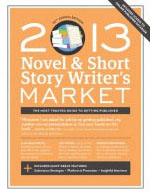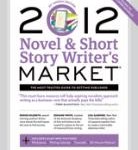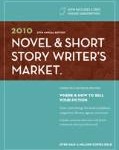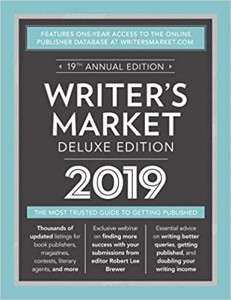 Chapter on Ten-Minute Marketing for Writers in the Writer’s Market Deluxe Edition 2019: The Most Trusted Guide to Getting Published (Writer’s Digest Books) by Tania Casselle.
Chapter on Ten-Minute Marketing for Writers in the Writer’s Market Deluxe Edition 2019: The Most Trusted Guide to Getting Published (Writer’s Digest Books) by Tania Casselle.
-
Contact me by Email
Go straight to these clips:
- Award-winning writer with news and features in media including: AOL Travel ■ MSN.com ■ Forbes Travel Guide ■ Latitudes inflight mag ■ Just Style ■ New Mexico Magazine ■ New Mexico Journey ■ Visit the USA ■ Arizona Westways ■ Healing Lifestyles ■ Restaurant Management ■ Urban Farm ■ Local Flavor ■ Mix Future Interiors ■ Knight Ridder/Tribune Business News ■ Indian Country Today ■ High Country News ■ Novel & Short Story Writer's Market 2010, 2012, 2013 ■ Writer's Digest 2015 Guide to Literary Agents ■ Jet Blue Out of the Blue ■ Chief Executive China ■ New Mexico Business Weekly ■ FFCTV ■ International Arts Manager ■ International Market News ■ Market News Express ■ Bally Total Fitness ■ Fit Style ■ International Textiles ■ The Therapist ■ Mslexia ■ Mix Fashion & Interior ■ Fashion Forecast ■ Worth Global Style Network ■ New Mexico Business Weekly POWER BOOK ■ Interior ■ U Magazine ■ Fuel ■ Fashion Business International ■ Drapers: The Fashion Business Weekly ■ World Review of Textile Design ■ Textile Forecast ■ Film Festival TV Channel ■ Release Print Film Magazine ■ Albuquerque The Magazine ■ Custom publications by HCP/Aboard (Miami Herald Media Co.) ■ Host for SOMOS Writers On Radio (KRZA, KTAO, KLDK, KVOT) ■ Blogging at: WriterMuscle ■ Albuquerque on the Cheap Winner of NMPW 2011 Award for a Special Interest Blog
- At the start of Write to the Finish, I had only a vague notion that I’d like to write a novel. Nine months later, I had a finished draft of a manuscript that became The Wig In The Window, which will be published by HarperCollins Children’s in 2013.” Kristen Kittscher.
“Tania gave me exactly what I’d hoped for — a critique of my manuscript that was clear-eyed, straightforward, honest, thoughtful, intelligent, and constructive. I followed her suggestions, and I couldn’t be more pleased with the result.” B.B. from New Mexico.
“I love working with Tania. She’s always encouraging... generous with her comments and time. All that, coupled with specific help in the form of knowledge, experience, and resources makes her a wonderful coach and editor. She will leave you inspired and more committed than ever to your writing.” R.S. from Illinois.
“I loved, loved this [Write to the Finish] course. I learned a tremendous amount, was extremely productive, and took courageous chances that paid off. One of the best courses I’ve ever taken.”
Literary Mama E-zine Editor Jessica DeVoe Riley said, "I love Sean and Tania. They are so thorough in their writing guidance… They helped me finish my first novel and a nonfiction book proposal." See the rest of Jessica's review of Write to the Finish on Literary Mama.
“Tania and Sean are a great team: insightful, generous, funny and tough. This is one of the best workshops I’ve ever taken.”
“You set such a supportive, fun, yet down-to-business tone for the course [Write to the Finish], that I’m not at all surprised that so many of us achieved all we had set out to do.”
“Tania Casselle was a very perceptive reader of my manuscript, very thorough and detail-oriented. Her questions, comments and suggestions were provocative and helped me probe into my character’s motivations. I felt much more confident as a writer and was able to quickly add valuable dimension to my work. I highly recommend Tania as a mentor / coach. Very inspirational.” M.D. in Houston, Texas.
See a few of the books published by my clients. - Award-winning writer with news and features in media including: AOL Travel ■ MSN.com ■ Latitudes inflight mag ■ Just Style ■ New Mexico Magazine ■ AAA New Mexico Journey ■ Restaurant Management ■ Urban Farm ■ Local Flavor ■ Mix Future Interiors ■ Knight Ridder/Tribune Business News ■ Indian Country Today ■ High Country News ■ Novel & Short Story Writer's Market 2010 and 2012 ■ Chief Executive China ■ New Mexico Business Weekly ■ International Arts Manager ■ International Market News ■ Market News Express ■ Bally Total Fitness ■ Fit Style ■ International Textiles ■ The Therapist ■ Mslexia ■ Mix Fashion & Interior ■ Fashion Forecast ■ Worth Global Style Network ■ New Mexico Business Weekly POWER BOOK ■ Interior ■ U Magazine ■ Fuel ■ Fashion Business International ■ Drapers: The Fashion Business Weekly ■ World Review of Textile Design ■ Textile Forecast ■ Film Festival TV Channel ■ Release Print Film Magazine ■ Albuquerque The Magazine ■ Custom publications by HCP/Aboard (Miami Herald Media Co.) ■ Host for SOMOS Writers On Radio (KRZA, KTAO, KLDK, KVOT) ■ Blogging at: Albuquerque on the Cheap Winner of NMPW 2011 Award for a Special Interest Blog
- I offer these services to help writers:
- Personal coaching
- Manuscript reviews and editing
- Online and phone seminars including Write to the Finish, for writers working on book-length projects, taught with author Sean Murphy
-
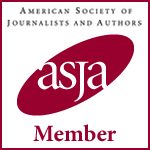
- As a writer, editor & writing coach, I know that the heart is the most important muscle for a writer: ■ Open your heart to your desire to write. ■ Write from the heart. ■ Take heart when the going gets tough.
Sign up for WriterMuscle
As a writer, editor & writing coach, I know that the heart is the most important muscle for a writer: ■ Open your heart to your desire to write. ■ Write from the heart. ■ Take heart when the going gets tough.
I offer these services to help writers:
- Personal coaching
- Manuscript reviews and editing
- Online and phone seminars including Write to the Finish, for writers working on book-length projects, taught with author and NEA fellow Sean MurphyWrite with us!

"The structure worked perfectly for me. It felt close to a real "away" writing retreat."
"This retreat will remain in my memory as one of my most life-affirming experiences during the COVID-19 pandemic."
"The whole retreat was inspiring, uplifting, and energizing."
"The entire weekend was a great experience. I went into it curious about whether or not I would be able to focus, being in a home office rather than in nature, but it worked beautifully. Very well organized and extremely well facilitated."
"The exercises helped me to forget about my concerns and just write."
"I loved connecting with other writers and there was a genuine atmosphere of trust with one another that allowed us all to feel safe, which gave us the courage to share our work."
"I love you two. Thanks for a writing adventure."
"I loved the content. It was always engaging and the writing exercises were challenging yet fun."
"Broke through my writing block as I hoped."
"I am thrilled that I came away with a pretty firm idea for a new project."
"Loved how you included mindful movement in addition to starting with meditation."
"It broke some through some sort of tightness I'd acquired by not being able to meet with other writers."
"You are both excellent teachers, knowledgeable on the craft of writing, expert facilitators and this just shined during the 4 days. You both have a truly beautiful presence and the retreat was superb on every level."
"I came in feeling dead about writing even though I've spent my entire career as an editor and writer. The exercises reminded me there is so much magic in writing." About Us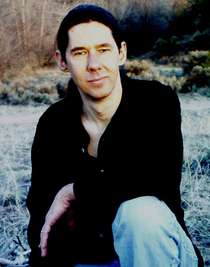

-

Writing Workshop Casa del Sol Ghost Ranch, NM Join us for a sweet, contemplative writing retreat at a secluded hacienda on Georgia O’Keeffe’s historic Ghost Ranch property, with stunning views of the Pedernal – Georgia’s own personal mountain! We are truly walking in Georgia’s footsteps when we take our creative inspiration from this sacred landscape. Info and registration here.
September 4 – 8, 2016
Award-winning writer with news and features in media including: AOL Travel ■ MSN.com ■ Forbes Travel Guide ■ Latitudes inflight mag ■ Just Style ■ New Mexico Magazine ■ New Mexico Journey ■ Visit the USA ■ Arizona Westways ■ Restaurant Management ■ Urban Farm ■ Local Flavor ■ Mix Future Interiors ■ Knight Ridder/Tribune Business News ■ Indian Country Today ■ High Country News ■ Novel & Short Story Writer's Market 2010, 2012, 2013 ■ Writer's Digest 2015 Guide to Literary Agents ■ Jet Blue Out of the Blue ■ Chief Executive China ■ New Mexico Business Weekly ■ International Arts Manager ■ International Market News ■ Market News Express ■ Bally Total Fitness ■ Fit Style ■ International Textiles ■ The Therapist ■ Mslexia ■ Mix Fashion & Interior ■ Fashion Forecast ■ Worth Global Style Network ■ New Mexico Business Weekly POWER BOOK ■ Interior ■ U Magazine ■ Fuel ■ Fashion Business International ■ Drapers: The Fashion Business Weekly ■ World Review of Textile Design ■ Textile Forecast ■ Film Festival TV Channel ■ Release Print Film Magazine ■ Albuquerque The Magazine ■ Custom publications by HCP/Aboard (Miami Herald Media Co.) ■ Host for SOMOS Writers On Radio (KRZA, KTAO, KLDK, KVOT) ■ Blogging at: WriterMuscle ■ Albuquerque on the Cheap Winner of NMPW 2011 Award for a Special Interest Blog
For Greatist Pitch
Award-winning writer with news and features in media including: AOL Travel ■ MSN.com ■ Forbes Travel Guide ■ Latitudes inflight mag ■ Just Style ■ New Mexico Magazine ■ New Mexico Journey ■ Visit the USA ■ Arizona Westways ■ Healing Lifestyles ■ Restaurant Management ■ Urban Farm ■ Local Flavor ■ Mix Future Interiors ■ Knight Ridder/Tribune Business News ■ Indian Country Today ■ High Country News ■ Novel & Short Story Writer's Market 2010, 2012, 2013 ■ Writer's Digest 2015 Guide to Literary Agents ■ Jet Blue Out of the Blue ■ Chief Executive China ■ New Mexico Business Weekly ■ FFCTV ■ International Arts Manager ■ International Market News ■ Market News Express ■ Bally Total Fitness ■ Fit Style ■ International Textiles ■ The Therapist ■ Mslexia ■ Mix Fashion & Interior ■ Fashion Forecast ■ Worth Global Style Network ■ New Mexico Business Weekly POWER BOOK ■ Interior ■ U Magazine ■ Fuel ■ Fashion Business International ■ Drapers: The Fashion Business Weekly ■ World Review of Textile Design ■ Textile Forecast ■ Film Festival TV Channel ■ Release Print Film Magazine ■ Albuquerque The Magazine ■ Custom publications by HCP/Aboard (Miami Herald Media Co.) ■ Host for SOMOS Writers On Radio (KRZA, KTAO, KLDK, KVOT) ■ Blogging at: WriterMuscle ■ Albuquerque on the Cheap Winner of NMPW 2011 Award for a Special Interest Blog








